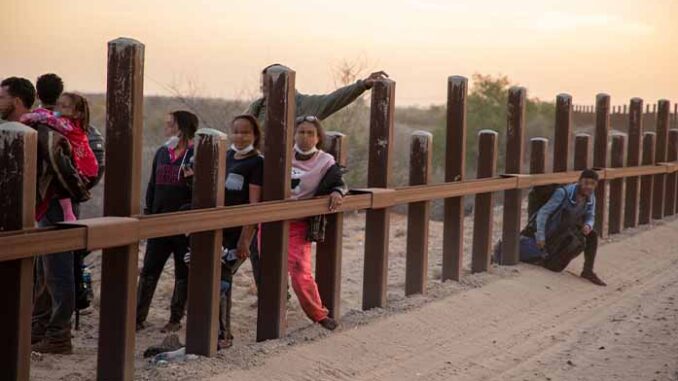
Property owners and communities along Arizona’s border with Mexico are hopeful several outstanding issues will be addressed now that the U.S. Department of Homeland Security (DHS) is taking over responsibility from the U.S. Department of Defense (DoD) for several incomplete border barrier projects.
On Dec. 20, DHS Secretary of Alejandro Mayorkas announced those unfinished DoD “border wall” projects are now under control of DHS and its U.S. Customs and Border Protection (CBP) agency. Mayorkas has instructed CBP leadership, which includes the U.S. Border Patrol, to undertake activities necessary “to address urgent life, safety, environmental” issues left in the wake of the sudden stoppage of wall construction President Joe Biden ordered upon taking office.
Contractors were forced to abandon worksites, leaving many segments of the border wall with improper stabilization and inoperable flood control systems. In addition, millions of dollars’ worth of construction materials purchased by taxpayers were simply left behind to rot when Biden did not allow contractors to resume work.
The DHS statement acknowledges a “large majority” of the incomplete DoD projects are located within USBP’s Tucson Sector, a 262-mile stretch of border between Yuma County’s eastern county line to the Arizona / New Mexico state line. CBP will also assess additional remediation needs in USBP’s San Diego, El Centro, Yuma, El Paso, and Del Rio Sectors.
“For these projects, CBP will work closely with stakeholders, including impacted landowners, tribal, state, and local elected officials, and federal agencies to seek input and help on prioritizing potential remediation activities within each Sector,” DHS has promised.
It is welcomed news for Cochise County Sheriff Mark Dannels, who has been vocal in his advocacy for “a reasonable conclusion to America’s border infrastructure,” while expressing concern about the harm caused by the abrupt halt of construction.
Dannels has conducted tours for several elected officials to show how access gaps were left open, gates were missing, and foundations were not completed. And he has drawn attention to the environmental damage and impact to quality of life for landowners and residents.
“On Monday, I spoke to Secretary Mayorkas who updated me on this current administration’s decision to conclude the southern border’s infrastructure,” Dannels told Arizona Daily Independent. “On behalf of our communities and citizens’ public safety, I thanked him and the Administration for moving this project forward.”
Dannels added that he, along with Yuma County Sheriff Leon Wilmot and Pinal County Sheriff Mark Lamb, will be meeting next week with DHS and CBP leadership to discuss Arizona’s current border challenges. Included in the meeting will be newly appointed CBP Commissioner Chris Magnus, who until recently was Tucson’s police chief.
“My commitment along with my fellow Sheriffs is to continue this dialogue on behalf of our citizens. And their quality of life will be a priority,” said Dannels, who confirmed he has been informed the new CBP efforts will not include construction or installation of any new sections of border wall.
Among the activities CBP can authorize includes, but is not limited to:
- Completing and/or installing drainage to prevent flooding.
- Installing and completing permanent erosion control to ensure the stability of structures in the region.
- Completing prior construction of patrol, maintenance, and access roads to address safety concerns.
- Remediating temporary use areas such as laydown yards, haul roads, and project areas impacted by construction.
- Disposing of residual materials not required for completion of the work
- Closing small gaps that remain open from prior construction activities and remediating incomplete gates.

